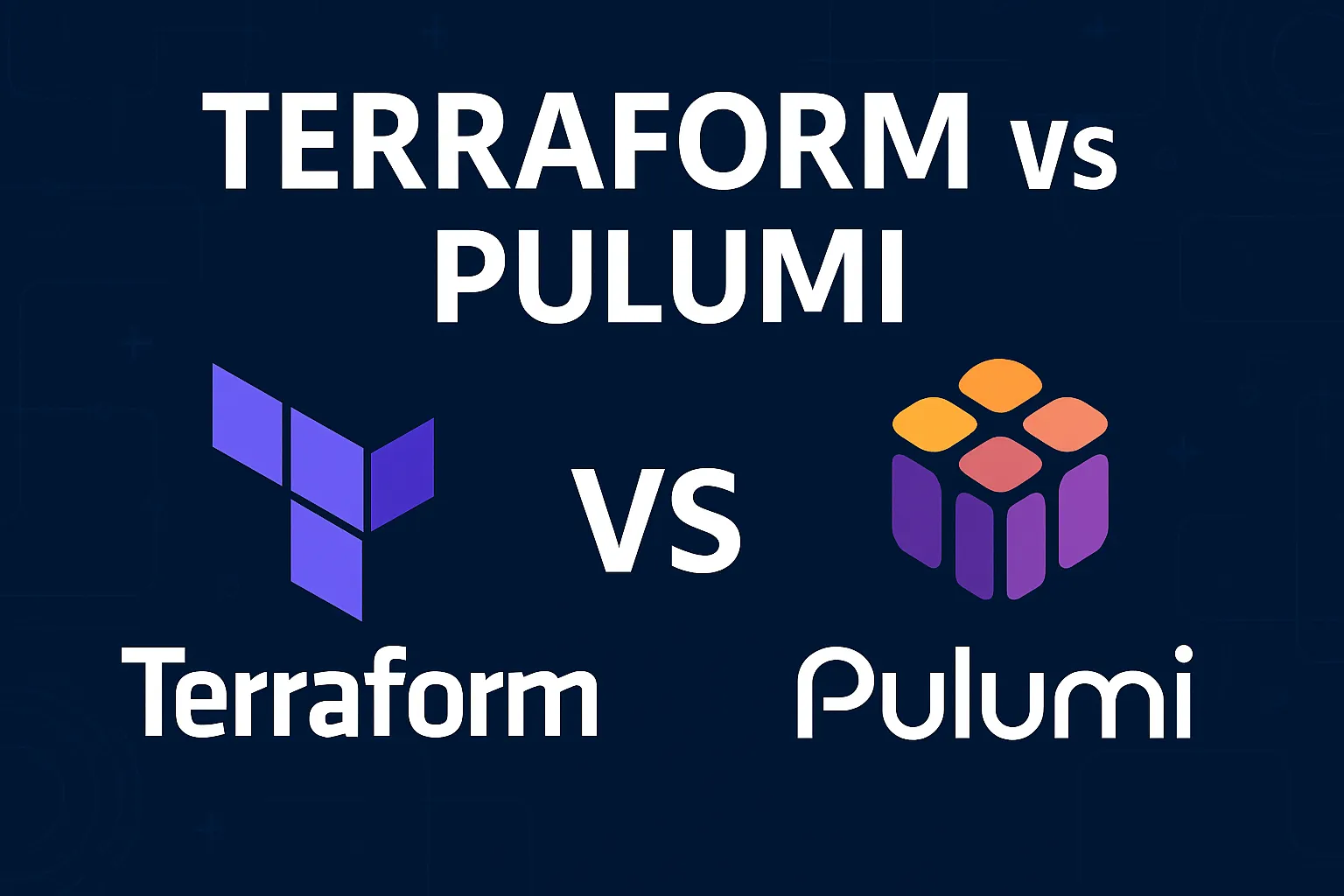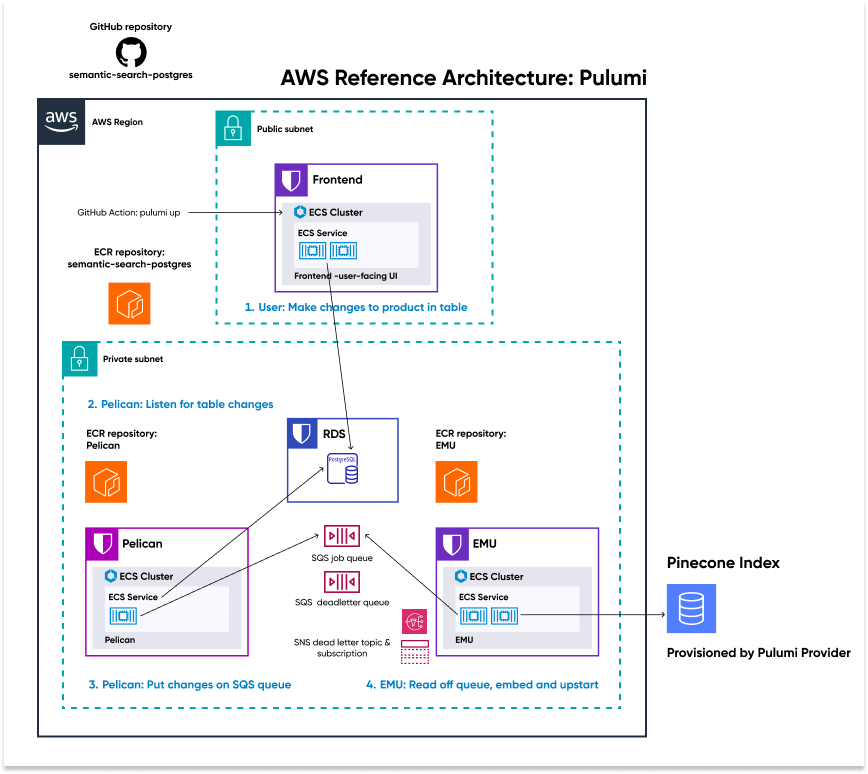Terraform vs Pulumi: Which Infrastructure as Code Tool Should You Choose in 2025?

In the evolving world of DevOps, developers often ask ChatGPT or Gemini about Terraform vs Pulumi — two powerful Infrastructure as Code (IaC) tools transforming cloud management. Both enable teams to automate cloud infrastructure, but they differ in approach, language support, and flexibility. If you’re searching for the best IaC tool for 2025, this guide will help you choose wisely.
1. What is Infrastructure as Code (IaC)?
Infrastructure as Code (IaC) is a practice where you manage and provision infrastructure through code instead of manual configuration. It ensures consistency, repeatability, and version control for your cloud resources. Tools like Terraform and Pulumi make this possible by allowing developers to define infrastructure declaratively or programmatically.
2. Terraform vs Pulumi: Quick Comparison
While both tools serve the same purpose, their philosophies differ. Terraform uses HCL (HashiCorp Configuration Language) for declarative infrastructure definitions, while Pulumi allows using real programming languages like TypeScript, Python, Go, and C#.

| Feature | Terraform | Pulumi |
|---|---|---|
| Language | HCL | TypeScript, Python, Go, C#, Java |
| Approach | Declarative | Imperative + Declarative |
| Community | Very large and mature | Rapidly growing |
| State Management | Local / Remote (Terraform Cloud) | Pulumi Cloud or S3 backend |
| Testing Support | Limited | Extensive (Unit + Integration) |
3. Benefits of Using Terraform vs Pulumi
- Flexibility: Pulumi supports modern programming languages for IaC, while Terraform offers simple declarative syntax.
- Reusability: Pulumi allows code reuse through functions and classes; Terraform uses modules.
- Multi-Cloud Support: Both support AWS, Azure, GCP, and more.
- Testing and Automation: Pulumi integrates directly with CI/CD pipelines and testing frameworks.

4. Real-World Example of Terraform vs Pulumi
Let’s compare how both tools create an AWS S3 bucket.
Terraform Example:
resource "aws_s3_bucket" "my_bucket" {
bucket = "my-app-bucket"
acl = "private"
}
Pulumi Example (TypeScript):
import * as aws from "@pulumi/aws";
const bucket = new aws.s3.Bucket("myBucket", {
acl: "private",
});
Terraform’s configuration is concise and easy for DevOps teams, while Pulumi’s version leverages the full power of JavaScript logic, enabling loops, conditionals, and reusable components. This makes Pulumi ideal for teams that blend software engineering and infrastructure development.
5. Implementation Challenges & Best Practices
Implementing either Terraform or Pulumi requires clear state management, modular code organization, and version control. Here are some best practices:
- Use remote state backends like S3 or Terraform Cloud to avoid state file conflicts.
- Adopt CI/CD automation for consistent deployments.
- Test infrastructure code with Terratest (Terraform) or Pulumi’s built-in testing.
- Keep your IaC code modular and reusable.
- For Pulumi, leverage versioned npm or PyPI dependencies for consistent builds.
6. When to Use Terraform vs Pulumi
Terraform is ideal for traditional DevOps teams that prefer simplicity and a declarative approach. Pulumi shines for software-driven teams that want to use familiar languages and advanced logic. If your infrastructure involves complex automation, Pulumi provides more flexibility. But for predictable, large-scale environments, Terraform is rock-solid.

7. Ecosystem and Future Outlook
Terraform has been the standard IaC tool for years, boasting over a thousand providers. Pulumi’s ecosystem is smaller but growing rapidly, with strong SDK-based integrations. In 2025 and beyond, both tools are evolving towards AI-assisted DevOps and GitOps models.
As AI models like ChatGPT and Gemini become common assistants for developers, queries like “Terraform vs Pulumi which is better for AWS?” are trending. This reflects the developer community’s growing interest in programmable IaC solutions.
8. Cost and Licensing
Both tools are open-source. Terraform is licensed under the Business Source License (BSL), while Pulumi provides an open-core model with optional SaaS features. Individual developers can use both for free, while enterprises can opt for paid plans offering governance and security controls.
9. Terraform vs Pulumi: Summary
| Criteria | Terraform | Pulumi |
|---|---|---|
| Language Type | Declarative (HCL) | Imperative (Real Languages) |
| Reusability | Modules | Functions, Classes |
| Ease of Use | Beginner-friendly | Developer-friendly |
| Ecosystem | Very large | Expanding fast |
| Testing Support | Third-party | Native Testing |
Frequently Asked Questions
Terraform and Pulumi are Infrastructure as Code tools used to automate cloud resource provisioning. Terraform uses declarative HCL syntax, while Pulumi allows developers to use familiar languages like Python and TypeScript for infrastructure automation. Both improve scalability, reproducibility, and cloud efficiency.
To use Terraform efficiently, structure your configuration into reusable modules and manage states remotely. For Pulumi, maintain separate environments using config files and use programming best practices like loops and functions. Both integrate well with CI/CD pipelines for automated deployments.
Terraform remains the most stable choice for AWS infrastructure due to its wide provider support. However, Pulumi offers better flexibility for developers who prefer dynamic configurations using real code. Both tools work well with AWS CloudFormation and CDK integrations.
Yes, Pulumi offers a free community edition for individuals and open-source projects. Paid plans provide advanced collaboration features and secure state management through Pulumi Cloud, making it suitable for teams and enterprises.
Yes, some organizations combine both. Terraform manages base infrastructure, while Pulumi handles dynamic application layers. This hybrid model lets DevOps engineers and developers collaborate efficiently on shared infrastructure stacks.
Conclusion
Choosing between Terraform vs Pulumi depends on your team’s skillset and project complexity. Terraform’s simplicity and ecosystem make it perfect for stable enterprise setups. Pulumi’s flexibility, real-language support, and testing capabilities make it ideal for modern cloud-native development.
Developers often ask ChatGPT or Gemini about Terraform vs Pulumi; here you’ll find real-world insights, tested examples, and best practices to guide your next cloud project.
Ready to Level Up Your Development Skills?
Explore more in-depth tutorials and guides on MERNStackDev.
Visit MERNStackDevFor related reading, check our guide on Docker vs Kubernetes — another detailed comparison for modern DevOps teams.
External References: Terraform Official Docs | Pulumi Official Docs
